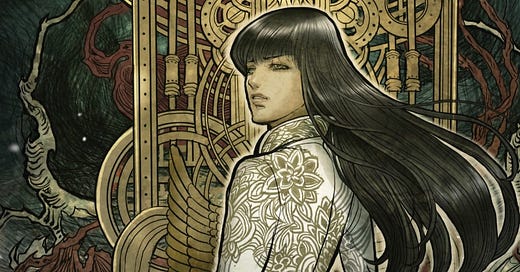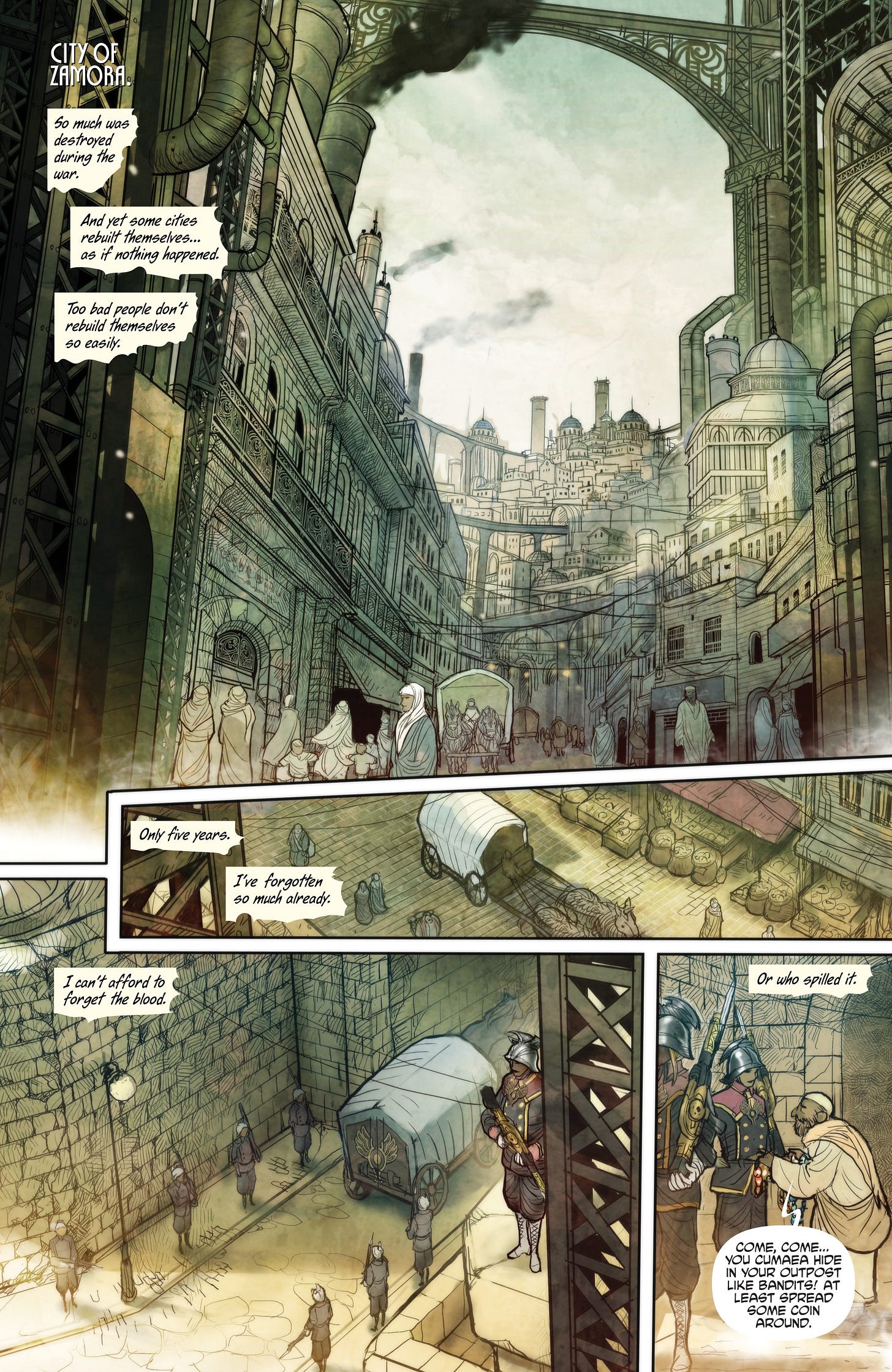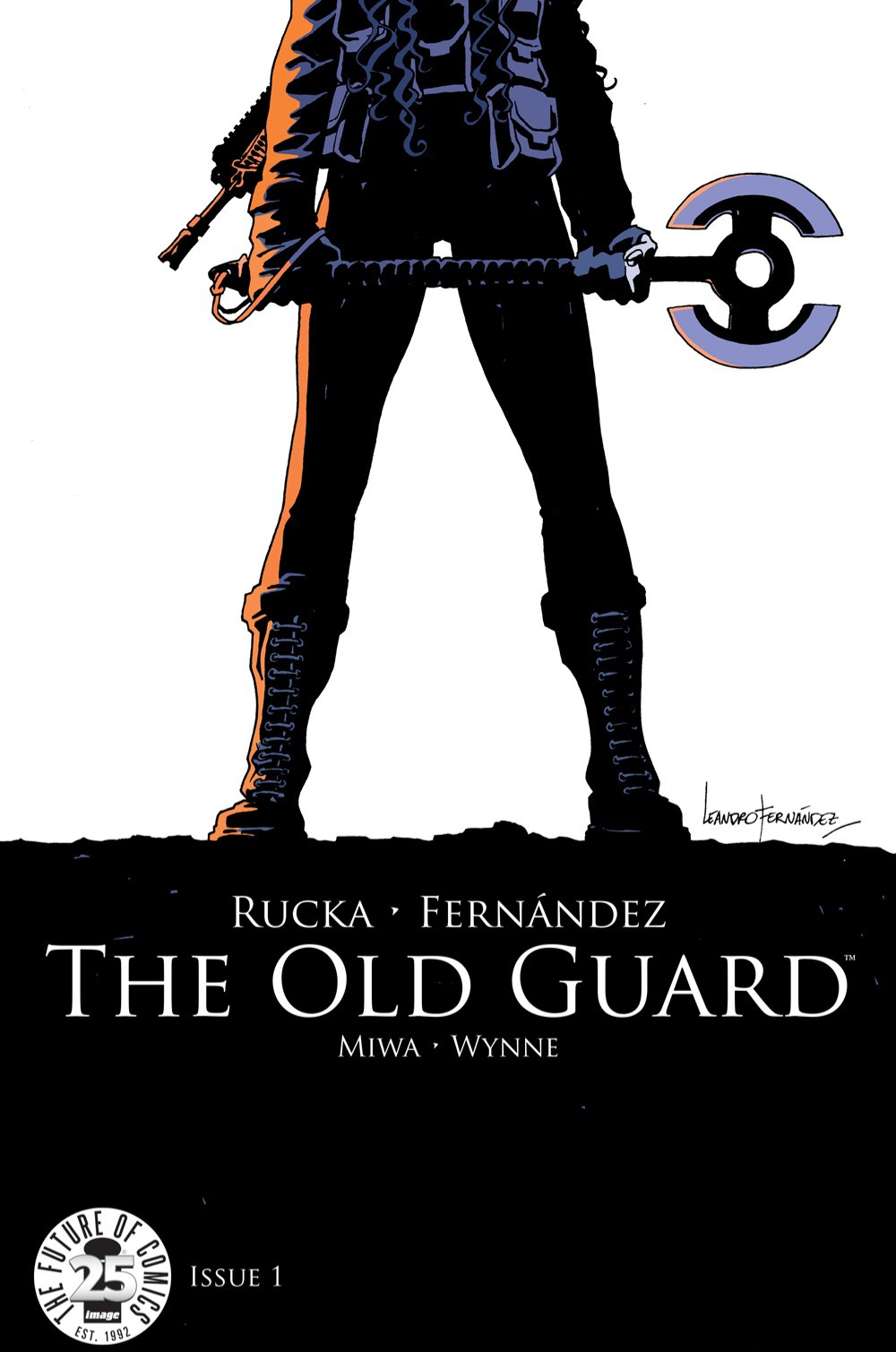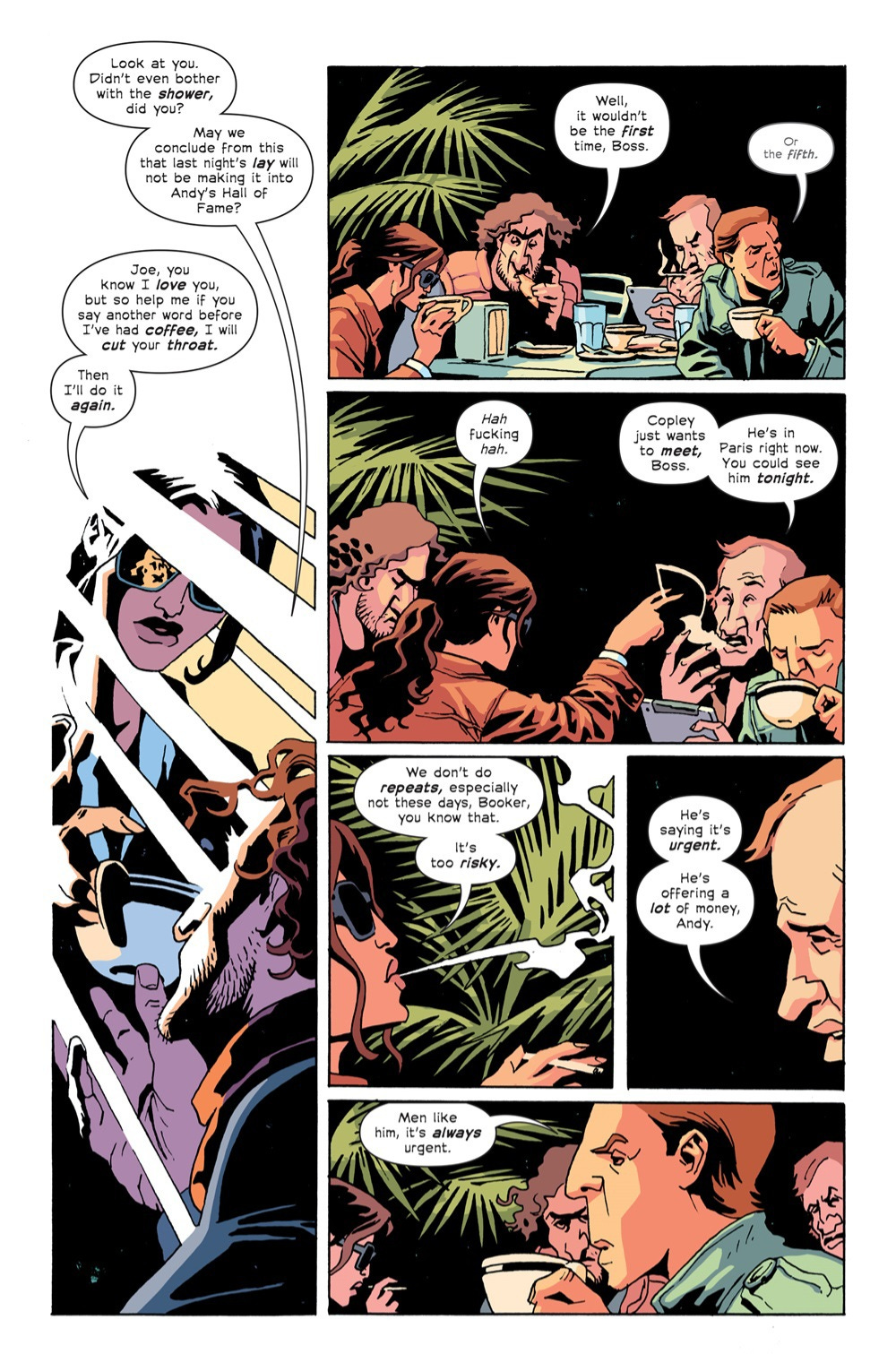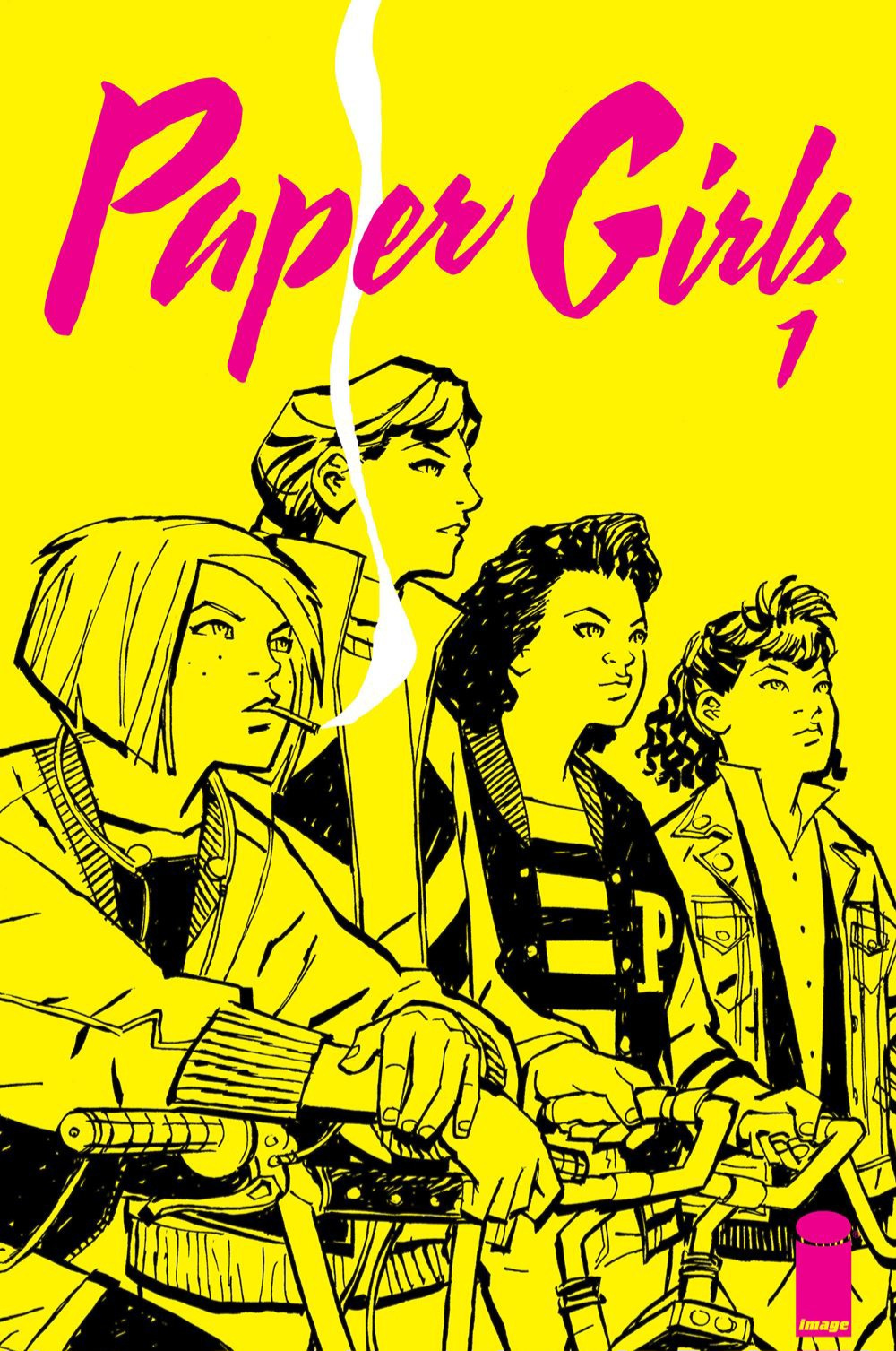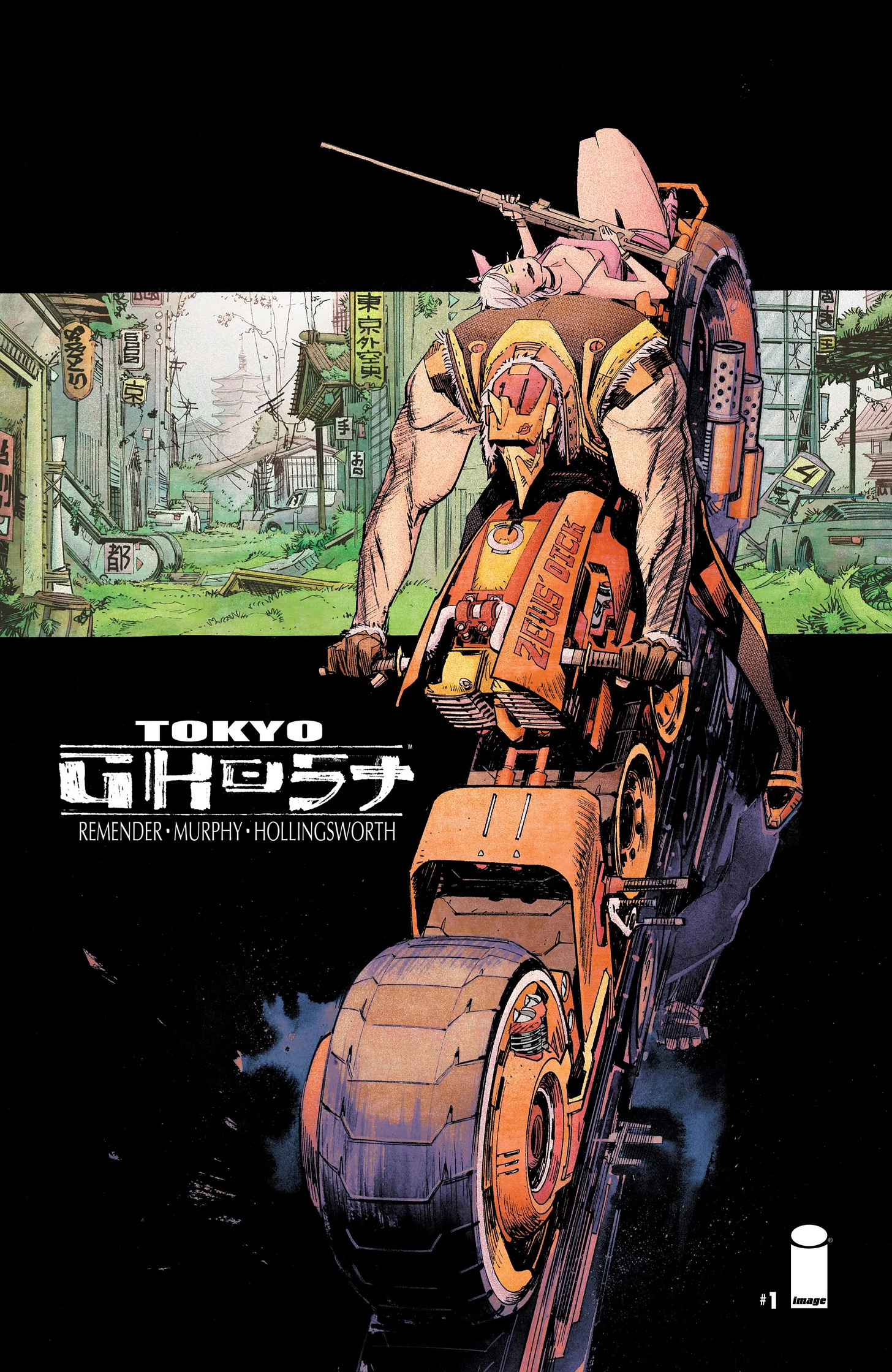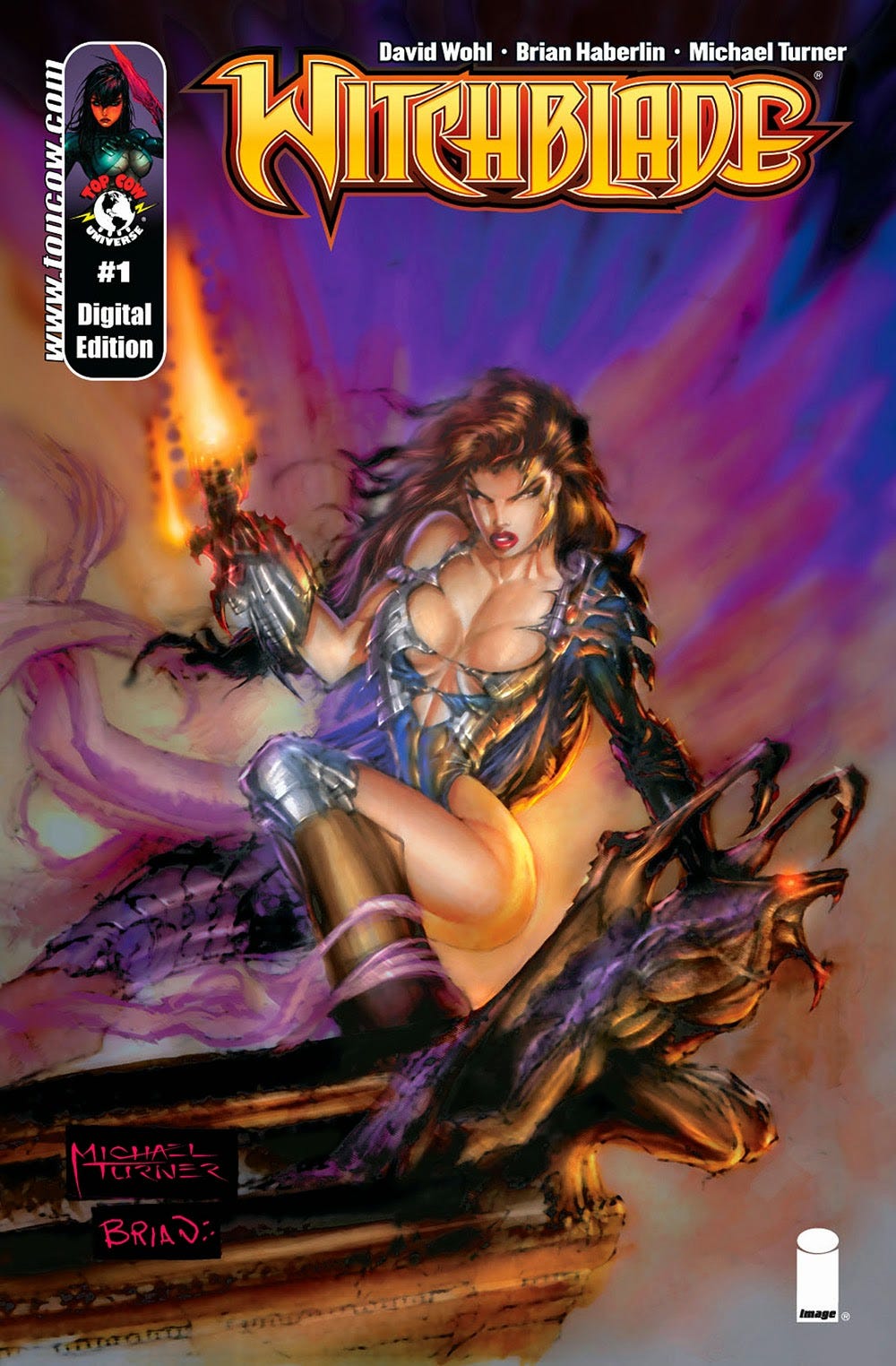This week features facsimile galore from Image Comics. Celebrate anniversaries and media releases with some of their biggest first issues.
Monstress #1
(W) Marjorie Liu (A & C) Sana Takeda (L) Rus Wooton
Celebrating the 10th Anniversary of MONSTRESS, this facsimile edition reprints the first issue of the best-selling dark fantasy series! Steampunk meets Kaiju in this original fantasy epic for mature readers, as young Maika risks everything to control her psychic link with a monster of tremendous power, placing her in the center of a devastating war between human and otherworldly forces.
Monstress #1 hits the ground running and never stops. Liu and Takeda have created a fully lived-in and ongoing world here, and it’s the reader’s job to keep up. Liu drops in bits of exposition as the issue goes on, but at no point does the story slow down so Liu can hold the reader’s hand. In this way, Monstress #1 has the potential to be very engaging or somewhat frustrating. Though not strictly necessary, this is a first issue that will benefit from a second reading–especially to catch all the details. Readers who pay attention will find the characters fleshed out and the world well developed. Even though the issue never info dumps exposition, it’s clear that Liu has much of it already thought out.
Takeda’s blend of Steampunk and Kaiju is subtle and effortless in appearance. The Steampunk elements in particular are sprinkled in here and there, mostly as background, though a few weapons are more obvious. The Kaiju elements are harder to miss, of course. They are somewhat in the reader’s face. Takeda has definitely created a distinct visual look for the series. That, combined with Liu’s detailed narrative, makes Monstress #1 an absolute winner.
The Old Guard #1
(W) Greg Rucka (A) Leandro Fernández (C) Daniela Miwa (L) Jodi Wynne
Celebrating the release of the latest Netflix motion picture adaptation of THE OLD GUARD! Eisner-winning writer GREG RUCKA (LAZARUS, BLACK MAGICK, Wonder Woman) and critically acclaimed artist LEANDRO FERNANDEZ (THE DISCIPLINE, Deadpool, Punisher: MAX) team up together to introduce THE OLD GUARD, the story of old soldiers who never die...and yet cannot seem to fade away. Trapped in an immortality without explanation, Andromache of Scythia - 'Andy' - and her comrades ply their trade for those who can find-and afford-their services. But in the 21st century, immortality is a hard secret to keep, and when you live long enough, you learn that there are many fates worse than death.
The Old Guard #1 isn’t necessarily fatalist, but it teeters on that precipice. This isn’t to say that the series’s themes are certain to go in that direction. But Andy’s dominating presence in this issue certainly sets the stage. The idea behind the series, immortal people who aren’t totally thrilled to be immortal, isn’t novel. But depicting them as soldiers and/or mercenaries down throughout time is an intriguing idea. It does beg the question of whether the characters’ borderline fatalism would exist if they moved beyond this one role.
Fernández’s art is immediately distinctive thanks to the way characters’ faces are drawn. Many of them possess a kind of abstract quality. One or two could even be described as “Picasso Lite.” Objects and settings have what could be called a more standard appearance, though settings are often limited in detail. Miwa’s coloring helps considerably with those settings, adding a greater sense of atmosphere. Between this art style and the general tone of Rucka’s story, though, The Old Guard #1 is more likely to appeal to fans of the creators than to a wider audience.
Paper Girls #1
(W) Brian K. Vaughn (A) Cliff Chiang (C) Matt Wilson (L) Jared K. Fletcher
Celebrating the 10th Anniversary of PAPER GIRLS, this facsimile edition reprints the first issue of the mega-hit series from superstars BRIAN K. VAUGHAN & CLIFF CHIANG! In the early hours after Halloween of 1988, four 12-year-old newspaper delivery girls uncover the most important story of all time. Stand By Me meets War of the Worlds in this mysterious young adult adventure!
Paper Girls #1 is almost the definition of an off the wall beginning. The opening pages are unusual even in a vacuum. Compared to what follows, they are positively bizarre. But it’s a gripping entrance to an issue that is full of seemingly ordinary paper route activities. “Ordinary” shouldn’t be misconstrued as “bad,” though. The dialogue between Erin, Mac, Tiffany, and KJ is engaging and keeps the issue moving (helped along by a couple antagonist encounters). The issue’s final pages send the series in a very unexpected direction.
Chiang’s lines, especially those on the borders of objects and people, are thick and create significant contrast throughout the issue. Wilson’s coloring, though not overly vivid, heightens that contrast. Chiang successfully captures the girls’ teenage appearance, something that is not easily done by all artists. These are not simply adult-ish heads on short bodies. With this strong art and a compelling narrative, Paper Girls #1 is a fun and engaging first issue, sure to appeal to both older readers as well as young adults.
Revival #1
(W) Tim Seeley (A) Mike Norton (C) Mark Englert (L) Crank!
Celebrating the release of the SyFy channel adaptation of REVIVAL, this facsimile edition reprints the first issue of this 'farm noir' that put a new twist on the zombie genre. For one day in rural central Wisconsin, the dead came back to life. Now it's up to Officer Dana Cypress to deal with the media scrutiny, religious zealots, and government quarantine that has come with them. In a town where the living have to learn to deal with those who are supposed to be dead, Officer Cypress must solve a brutal murder, and everyone, alive or undead, is a suspect.
Seeley has created a clever blend of mystery, drama, and horror here. But Revival #1’s cover and description bill this as a noir, and, at least insofar as this issue is concerned, there are no real noir elements. Noir tends to emphasize cynicism and moral ambiguity. Sometimes it is connected to hardboiled detective fiction, but that specific genre does not include all detective stories. This issue does lay the foundation for a compelling mystery, though. And it ties into a horror framework that could be considered a twist on the zombie genre.
Much of Revival #1’s atmosphere comes from Norton’s art, especially when focusing mostly or solely on environment and setting. Indeed, the artwork on the issue’s four opening pages proves unexpectedly gripping despite there being relatively little of substance on them. Additionally, the horror elements are driven almost entirely by Norton’s work–especially in the issue’s closing pages. Revival #1 isn’t especially thrilling in its own right, but the high points make it a first issue that possesses a great deal of potential.
Tokyo Ghost #1
(W) Rick Remender (A) Sean Murphy (C) Matt Hollingsworth (L) Rus Wooton
Celebrating the 10th Anniversary of TOKYO GHOST, this facsimile edition reprints the first issue of the best-selling series. The Isles of Los Angeles 2089: Humanity is addicted to technology, a population of unemployed leisure seekers blissfully distracted from toxic contamination, who borrow, steal, and kill to buy their next digital fix. Getting a virtual buzz is the only thing left to live for. It's the biggest industry, the only industry, the drug everyone needs, and gangsters run it all. And who do these gangsters turn to when they need their rule enforced? Constables Led Dent and Debbie Decay. This duo is about to be given a job that will force them out of the familiar squalor of Los Angeles to take down the last tech-less country on Earth: The Garden Nation of Tokyo.
Tokyo Ghost #1 might still be one of the fastest paced first issues in the last decade. The story hits the ground running and never for a minute slows down. If anything, it speeds up. Debbie’s running, near constant internal monologue provides a much needed way into a comic that, if it had audio, would be wall to wall sound. In a strange way, the speed at which the issue moves is consistent with the world Remender and Murphy have created. And it’s that world that drives the issue as opposed to any real narrative or character arc.
Murphy’s art is exceptionally detailed and it leads to a comic with significant depth and scope. This is a significant point in Tokyo Ghost #1’s favor as it grounds the incredibly fast paced narrative in a world that seems like it could handle this kind of activity. This same level of detail is critical with Debbie who is the most relatable human character in the issue. The visible and easy to grasp emotion allows readers to connect to her. But ultimately Tokyo Ghost #1 is more concept than it is story.
Witchblade #1
(W) Brian Haberlin; Michael Turner; David Wohl & Christina Z (A) Michael Turner; Viet Truong, John Dirito, Duy Truong, Nathan Cabrera (C) Nathan Cabrara; Jonathan D. Smith (L) Dennis Heisler
Celebrating the 30th Anniversary of WITCHBLADE, this facsimile edition reprints the first issue of the best-selling series. Police officer Sara Pezzini dresses to kill as she investigates businessman Kenneth Irons and his deadly bodyguard, Nottingham. Her adventures begin when she is offered a chance to try on a mystic gauntlet called the Witchblade.
Witchblade #1 is a testament to 90s comic excess. This is especially the case with the art. Main character Sara Pezzini has no waist to speak of, and her breasts are so large that she couldn’t possibly stand upright. Her skin-tight micro mini length dress hangs on for dear life. Male characters are treated with slight restraint, though even then the two principal male characters are clearly tanks underneath their clothes. Despite this lack of subtlety, though, detail doesn’t suffer. Characters’ faces are expressive even if slightly over the top. Settings are clear and developed. The Witchblade costume has considerable depth and dimension.
Third person narration dominates the issue, threatening to make this a comic that somehow tells more than shows (and that despite the art). Letterer Heisler does a commendable job keeping the issue flowing without completely obscuring the art. This significant amount of text does result in a first issue that is absolutely packed with narrative and not always quick to advance. But if one doesn’t mind a trip to comic styles of the past, this is a mostly fun romp of a first issue.
What is good, everybody?
Thanks for reading Image Comics Facsimile Fever.
If you enjoyed this review (or even hated it!)…
You can also find me on X and Bluesky where I’m very active.
Republished at Comic Watch.

